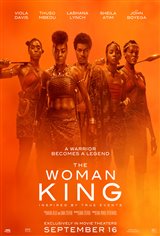The Woman King - True Story
The Dahomey Amazons
Houegbadja was the King of Dahomey from around 1645 until 1685 when he died. Houegbadja fathered a pair of boy-girl twins, Queen Hangbè and King Akaba. The origins of the Dahomey Amazons are still widely debated, since most of the records from this time were destroyed by colonialists. Some historians believe that the Amazons were formed from groups of female elephant hunters under Houegbadja's reign. Other historians believe them to have been formed under Queen Hangbè's reign, since she was known to have an entourage of female bodyguards.
Under King Ghezo's ruling from 1818 to 1858, the Dahomey Amazons were estimated to account for 30–40 percent of the army. Some women became soldiers voluntarily, while others were foreign captives or involuntarily enrolled by their husbands or fathers after complaints were made to the King about their behavior. The Amazons were often referred to as the Mino, which means "our mothers." The Mino were of high class and were supplied with tobacco, alcohol and as many as 50 slaves each.
The Dahomey region practiced the religion of Vodun (ancestor of voodoo), which is based on the belief that a male and female God called Mawu-Lisa came together to create the universe. For this reason, men and women are largely considered to be equal in the Kingdom of Dahomey. The Amazons were not allowed to marry, have children or have sexual relations with the King, as it was feared that they might try to kill him to overthrow his reign. The Dora Milaje in Black Panther are also based on the Dahomey Amazons.
The Amazons underwent extreme training that left the majority of them desensitized to pain and death. They were taught survival skills and often executed prisoners as part of their training. Politically, the Amazons fought for stronger commercial relations with England and favored the trade of palm oil above that of slaves. The Amazons consisted of many divisions, including huntress, reaper, archer, and gunner. Each division had unique uniforms, weapons, and female commanders. Eventually, the Dahomean Amazons would have Winchester rifles, clubs, and knives.
King Béhanzin would be the last leader of Dahomey. In 1890, Dahomey entered the Franco-Dahomean War and accounts from European observers would say that the Amazons "handled admirably" in hand-to-hand combat and had "incredible courage and audacity." Despite this, the warriors were unable to remain victorious against France's superior weaponry and guns. The Majority of the Dahomey Amazons were killed by firearms and bayonet charges in battle. The Kingdom of Dahomey became a French protectorate in 1892. Some oral accounts state that a few surviving Amazons remained hiding in Abomey, where they secretly assassinated several French officers.
The last surviving member of the Dahomey Amazons is thought to have been a woman named Nawi, who says she was at the final Franco-Dahomean battle in 1892. Nawi passed away in 1979 at over 100 years old. Nawi also happens to be the name of Lupita Nyong’o's character in The Woman King. Descendants and relatives of the fierce Amazons continue to keep their bravery and memory alive by sharing their stories. ~Senna Gill
